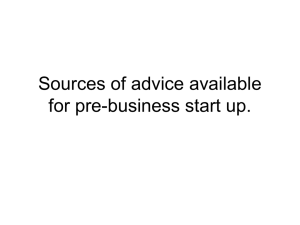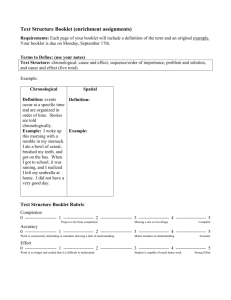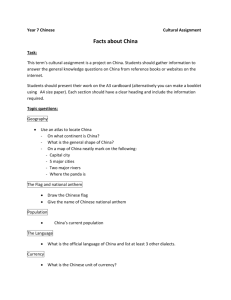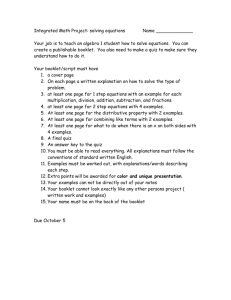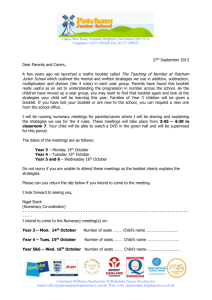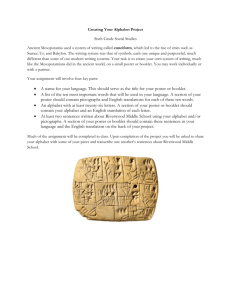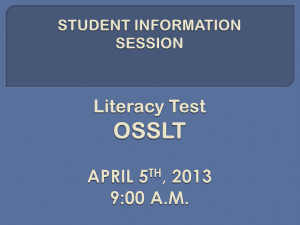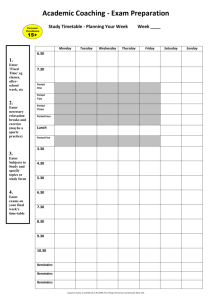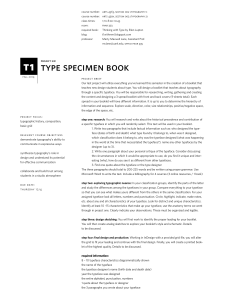Project Overview
advertisement
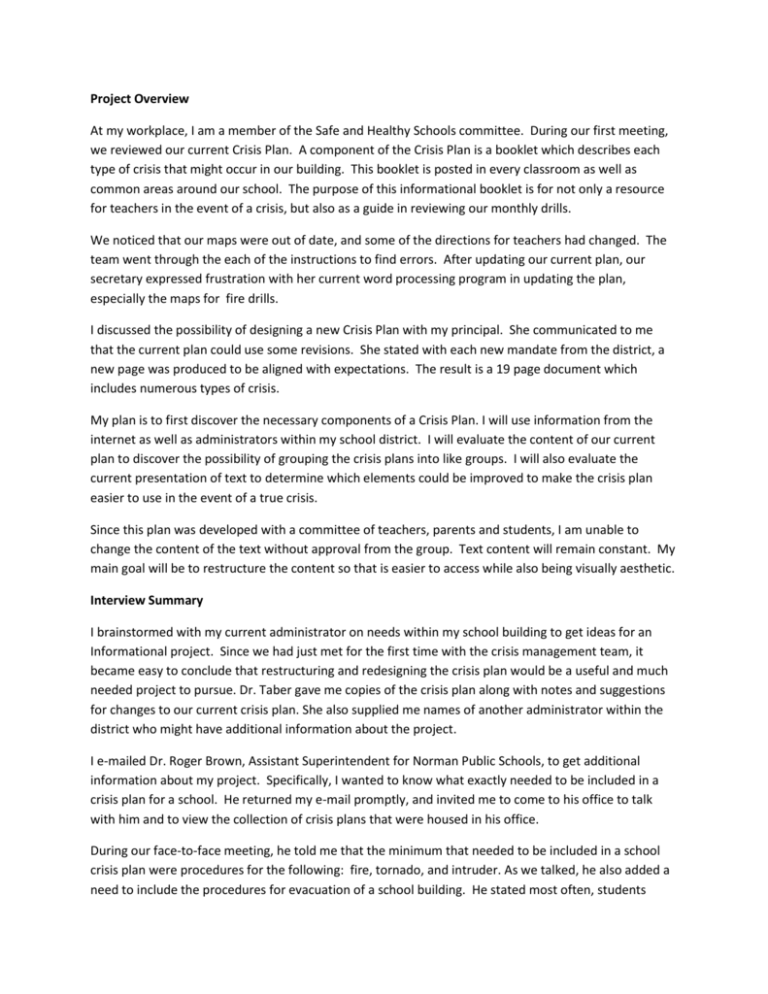
Project Overview At my workplace, I am a member of the Safe and Healthy Schools committee. During our first meeting, we reviewed our current Crisis Plan. A component of the Crisis Plan is a booklet which describes each type of crisis that might occur in our building. This booklet is posted in every classroom as well as common areas around our school. The purpose of this informational booklet is for not only a resource for teachers in the event of a crisis, but also as a guide in reviewing our monthly drills. We noticed that our maps were out of date, and some of the directions for teachers had changed. The team went through the each of the instructions to find errors. After updating our current plan, our secretary expressed frustration with her current word processing program in updating the plan, especially the maps for fire drills. I discussed the possibility of designing a new Crisis Plan with my principal. She communicated to me that the current plan could use some revisions. She stated with each new mandate from the district, a new page was produced to be aligned with expectations. The result is a 19 page document which includes numerous types of crisis. My plan is to first discover the necessary components of a Crisis Plan. I will use information from the internet as well as administrators within my school district. I will evaluate the content of our current plan to discover the possibility of grouping the crisis plans into like groups. I will also evaluate the current presentation of text to determine which elements could be improved to make the crisis plan easier to use in the event of a true crisis. Since this plan was developed with a committee of teachers, parents and students, I am unable to change the content of the text without approval from the group. Text content will remain constant. My main goal will be to restructure the content so that is easier to access while also being visually aesthetic. Interview Summary I brainstormed with my current administrator on needs within my school building to get ideas for an Informational project. Since we had just met for the first time with the crisis management team, it became easy to conclude that restructuring and redesigning the crisis plan would be a useful and much needed project to pursue. Dr. Taber gave me copies of the crisis plan along with notes and suggestions for changes to our current crisis plan. She also supplied me names of another administrator within the district who might have additional information about the project. I e-mailed Dr. Roger Brown, Assistant Superintendent for Norman Public Schools, to get additional information about my project. Specifically, I wanted to know what exactly needed to be included in a crisis plan for a school. He returned my e-mail promptly, and invited me to come to his office to talk with him and to view the collection of crisis plans that were housed in his office. During our face-to-face meeting, he told me that the minimum that needed to be included in a school crisis plan were procedures for the following: fire, tornado, and intruder. As we talked, he also added a need to include the procedures for evacuation of a school building. He stated most often, students would exit the building as a fire drill, and then procedures for evacuating the building from their outside position would need to be prescribed. Also, during the last school year we had a severe weather occurrence at the end of the school day which led the district to conclude that procedures needed to be addressed for an “end of school day” occurrence. He added that as a need within the crisis plan as well. Dr. Brown also communicated to me that the most important reason that the crisis plans are developed is to guide the administrator, classroom teacher, substitutes, and secretaries. These procedures need to be clear and easy to follow. Extra information needs to be reduced so that the directions are easily accessible in the event of a true crisis. From my meeting with Dr. Brown I assessed that the following procedures needed to be addressed in our school crisis plan: fire, tornado, intruder, end-of-school crisis, and evacuation. I was able to view his collection of crisis plans of all the schools in Norman Public Schools, including off site procedure documentation at head-start centers and hospitals. The contrast of content within these plans was remarkable. The plans ranged from a four page document which included only directions for the drills themselves, to 30 plus page documents which included very detailed information. Dr. Brown stressed that the shorter versions addressed the need of accessibility for clear directions of what to do in the event of a crisis. He mentioned that perhaps two documents could be developed: A crisis management plan and also a crisis response plan which would be posted in classrooms and general areas around the building. He stated that in the event of a true crisis, what needed to be in the teacher’s possession would be direct, clear directions of responses to the crisis. I then spoke again with my principal about what I discovered with Dr. Brown. I showed her my first draft of the visual layout of the crisis response plan. Within the plan, I wanted to use more color in the design and I questioned her about the availability to print the plan. Would it be feasible to print it with color? Since the response plan would be shorter than our current crisis plan, it was determined that printing the document would not be a problem. She also mentioned that perhaps a poster, instead of a booklet might be an idea that I could pursue. We discussed the constraints of adding clear maps for fire and tornado drill locations on a general poster for classrooms. We determined that this might be difficult. Also a smaller version in booklet form would enable the user to actually take the directions with them to their crisis area, whereas a poster would be difficult to transport. Design Considerations As I worked with the text, I experimented with different typeface. Since my project didn’t have extended text, except on the last page, I chose to use a sans-serif typeface. I felt that a crisp look was needed to communicate the urgency of the information. I chose to use reverse type for the headlines and I used Ariel Bold within. The use of the reverse type, which was color coded from the front cover, was used as a signal for the reader, to increase the legibility, and to find the information with ease. The contrast also helped to make the page visually aesthetic, since there are no pictures on the information pages. The cover was designed to also serve as a table of contents to the Crisis Plan. By utilizing the same type of headings on the following pages, repetition was utilized. A dragon picture was used in two places, on the cover and on the last page since this is the school’s mascot. I experimented with different color combinations, first utilizing the school’s colors, and also with multi-color. My subject matter expert chose the multi-color version as her choice for the plan. When I showed a draft online to the class, the first design issue was conflict of typefaces. While I was experimenting with the typefaces, some of them did not get changed to the final choice, therefore, there was a conflict. Spacing for clear reading was also an issue that I had to resolve. Typeface had to be reduced so that names and phone numbers were easier to read. The last page includes a lot of text and I edited the spacing between headings and text so that they were spaced appropriately. In class, more suggestions were given for my project. Headings were moved to line the bottom of the page, with text located just above the headings. I arranged the pages in this way and I particularly liked the headings at the bottom, since the booklet was bound at the top.
